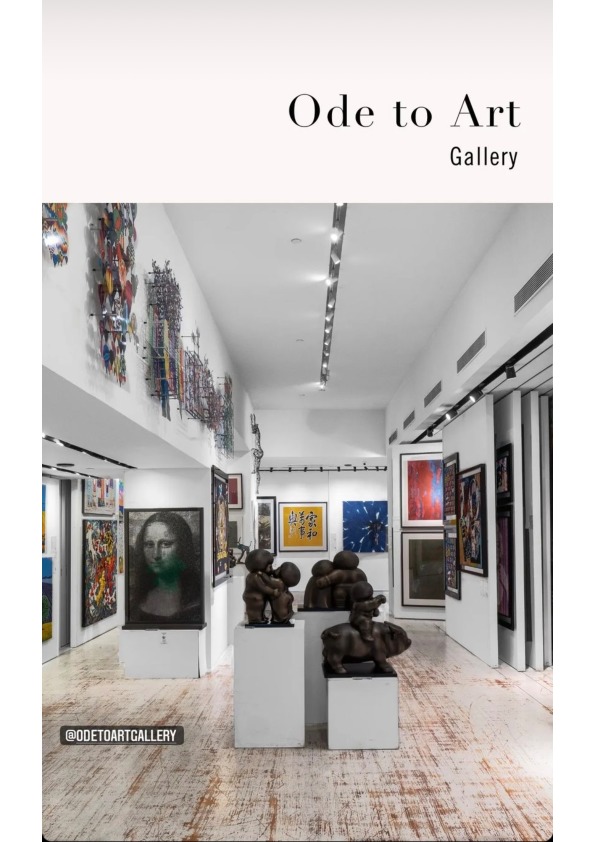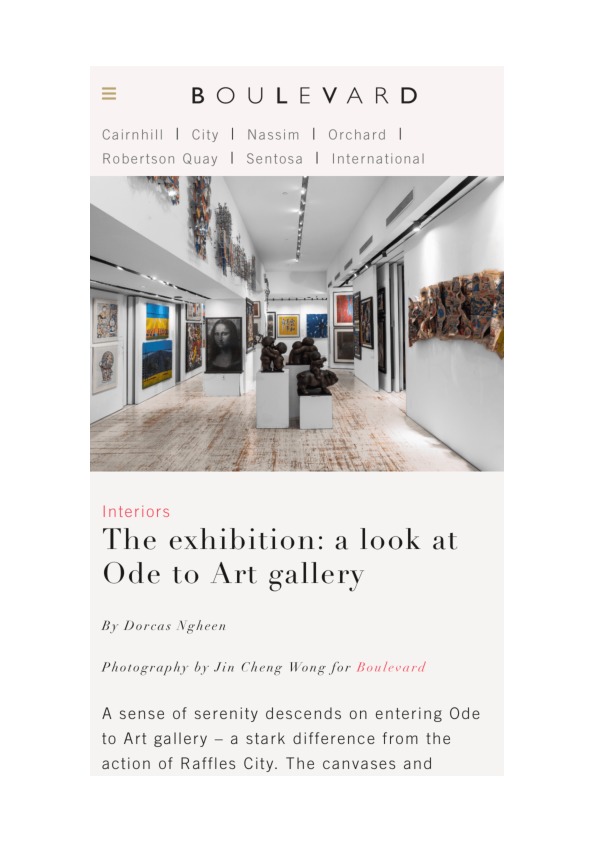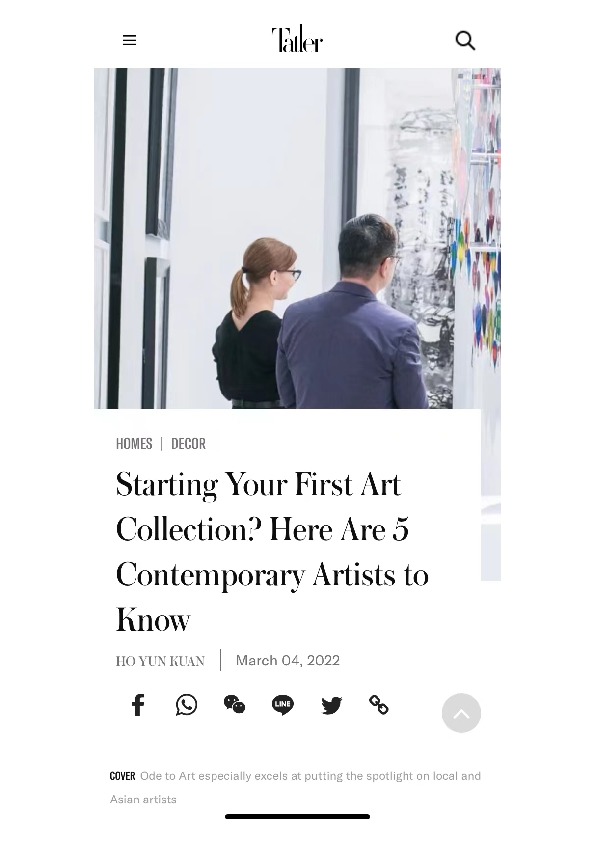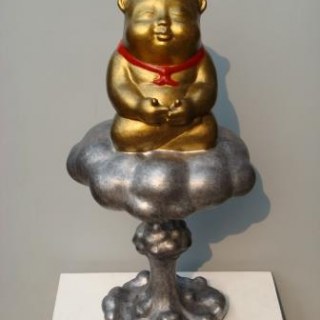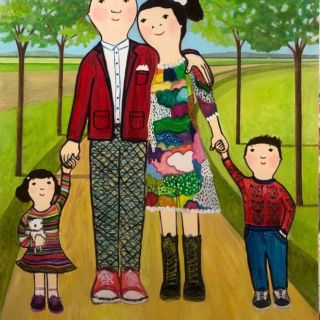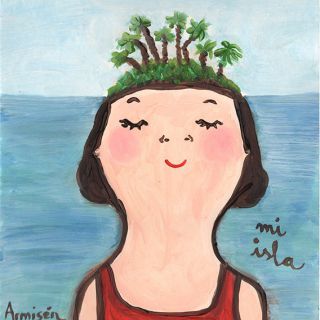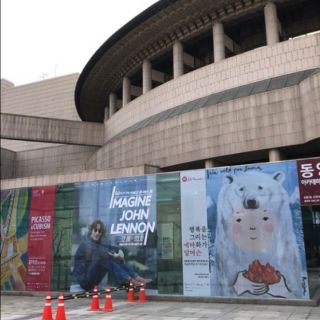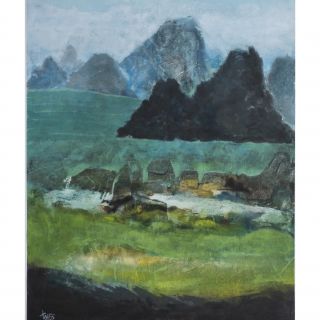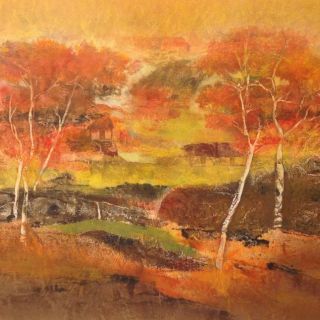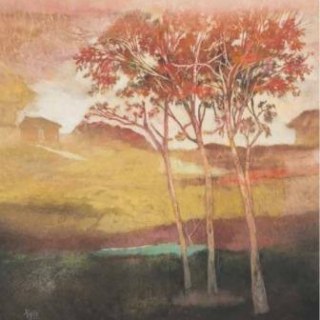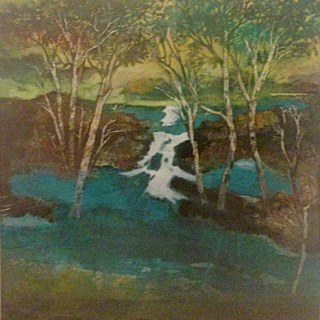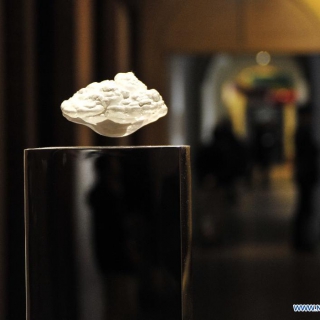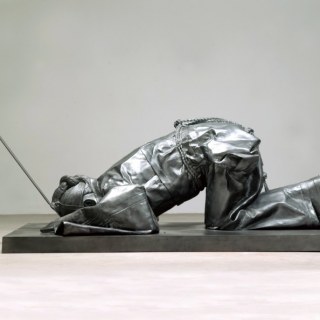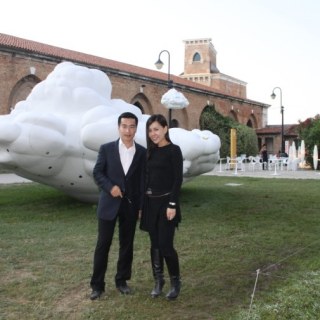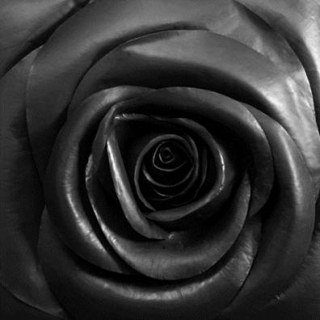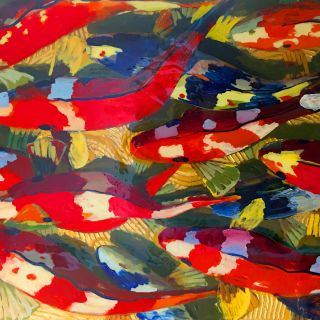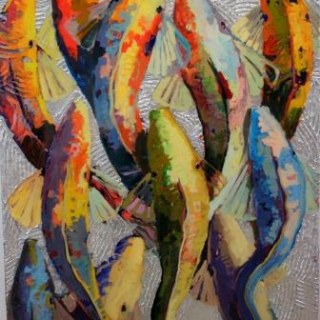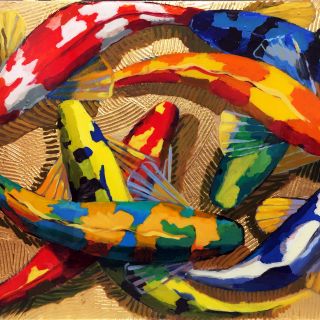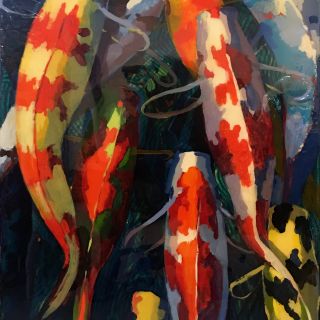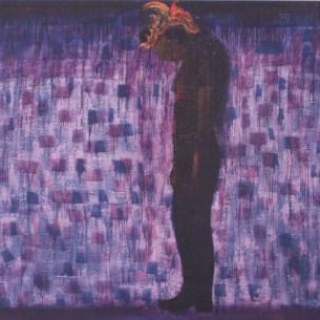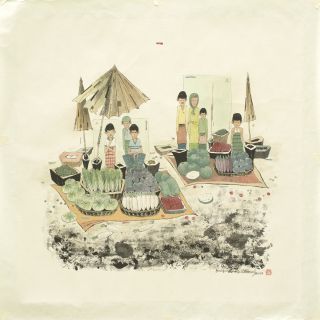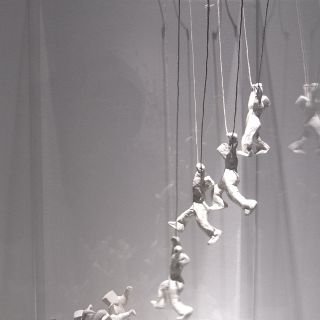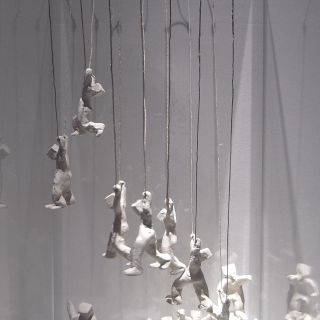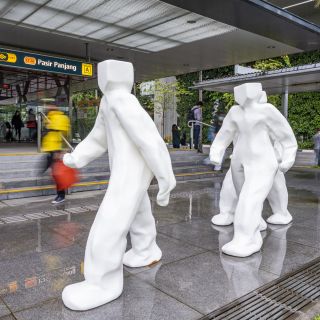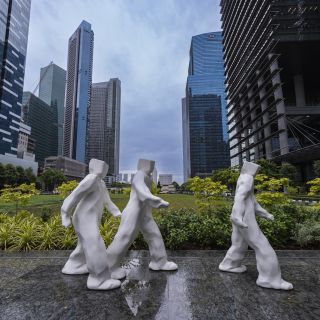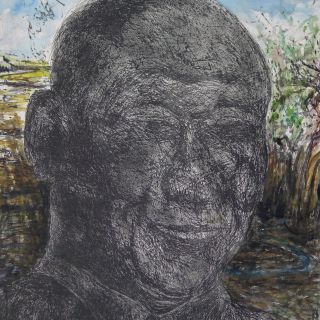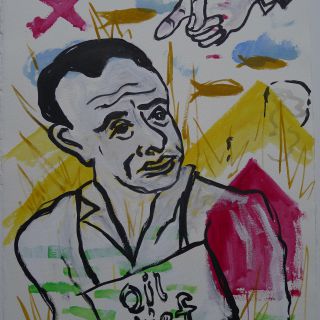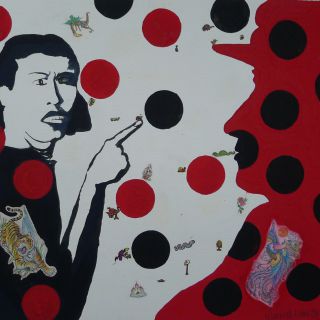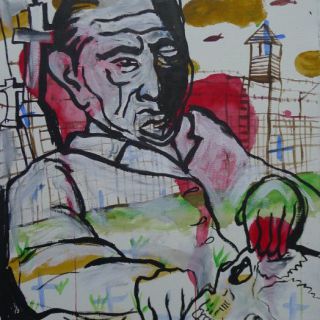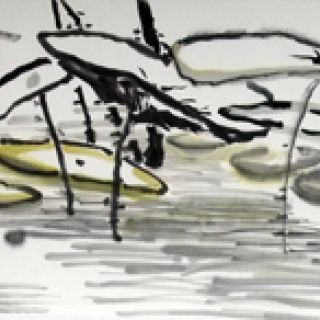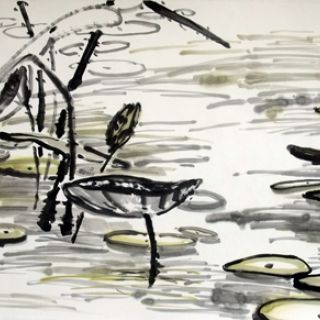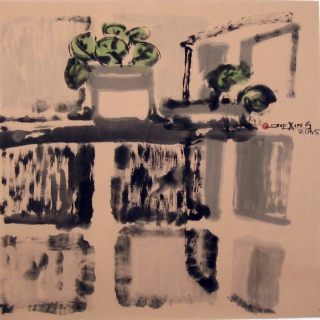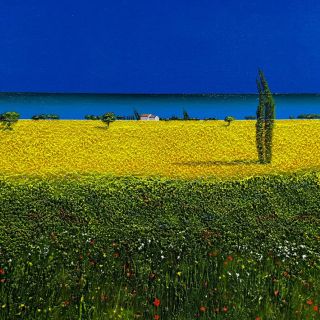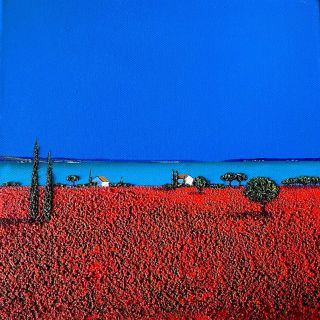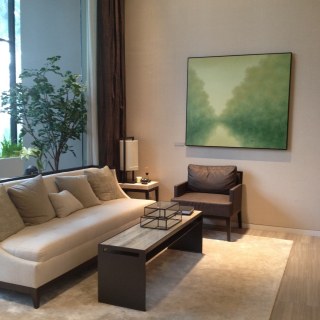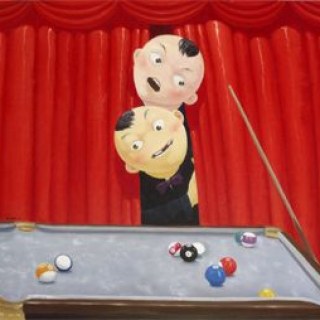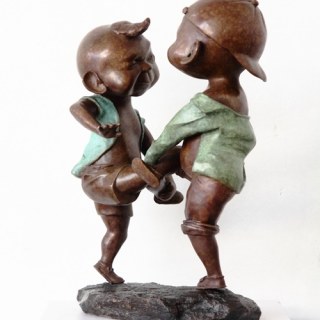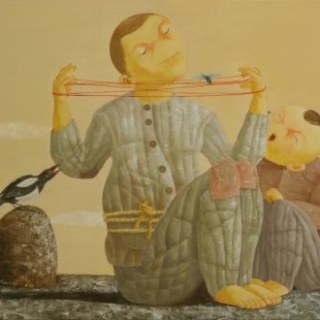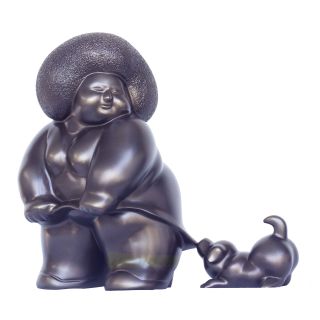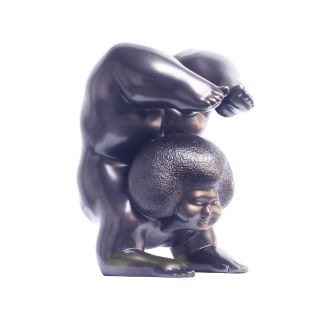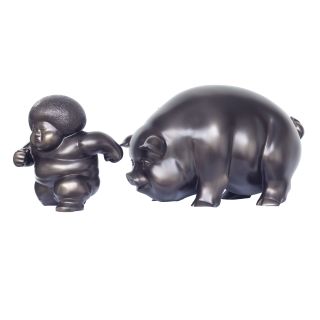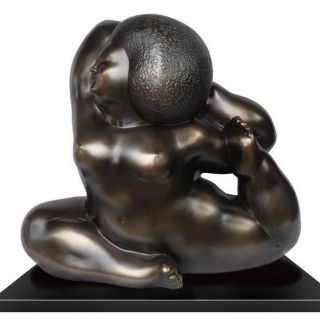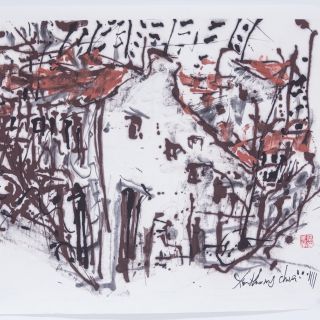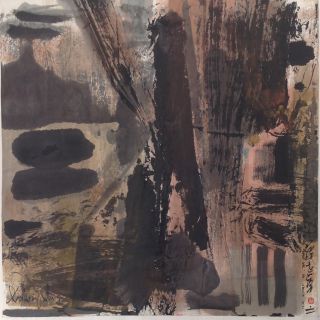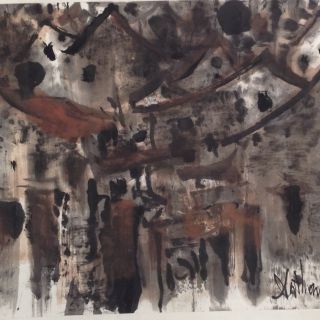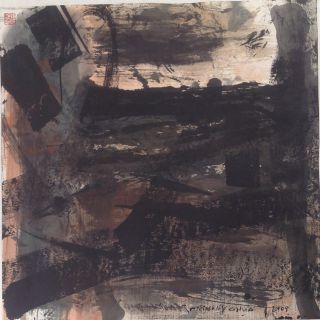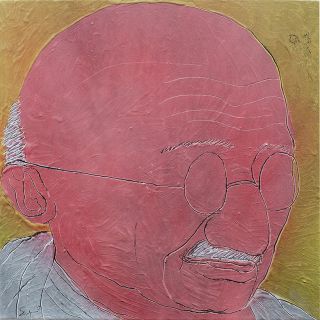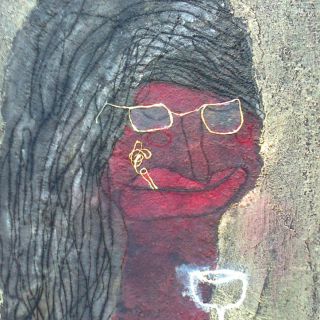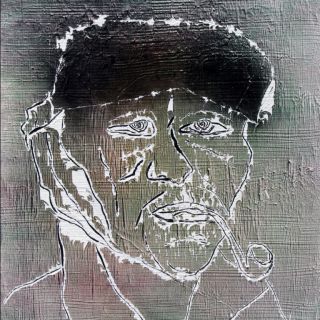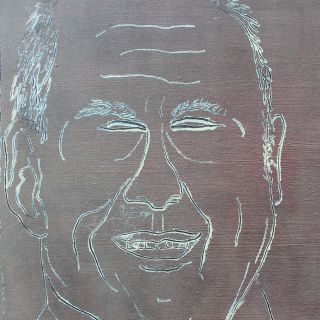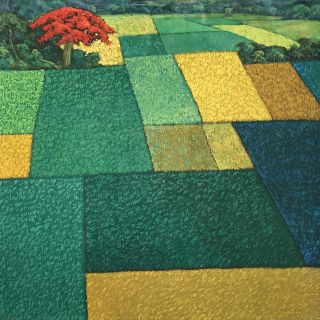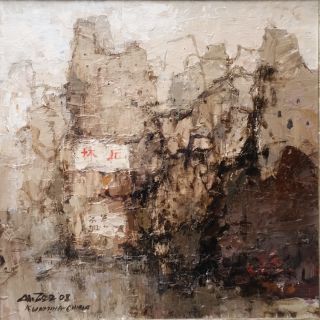cm_mixed media_2021.jpg)
Lee Sang Soo (born 1983) is a South Korean artist. He studied sculpture at Dong-A University College of Arts in Busan, and obtained his Masters degree at Hongik University Graduate School of Sculpture in Seoul, South Korea.
Fascinated with innovation and new technologies, Lee Sang Soo questions our relation to nature in a hyperconnected world.
His works appear extremely dynamic, an impression he achieves through an intricate use of positive and negative space in three dimensions. His animals, minimal in form, but extremely lively in colour, are represented only through clean, twisting lines. Through a subjective perspective, Lee Sangsoo grasps and captures deceptively simple morphological traits, making his figures immediately recognizable.
Cats, dogs, pigs, roosters, deer, flamingos and swans dialogue with the surrounding space and create very evocative, elegant, dynamic, and coloristic effects.
“Lines, planes, and colours are important elements in my sculptural practice. The lines drawn in my two-dimensional sketchbook determine the large flow and form of the work, and the sculpture becomes three-dimensional only in the three-dimensional space. On paper, the square lines are shown in various shapes and colours according to their flow and twist within the sculpture, and even in the still work can the motion be felt. The lines are rhythmically thickened or thinned according to the flow.” Lee Sang Soo
Fascinated with innovation and new technologies, Lee Sang Soo questions our relation to nature in a hyperconnected world.
His works appear extremely dynamic, an impression he achieves through an intricate use of positive and negative space in three dimensions. His animals, minimal in form, but extremely lively in colour, are represented only through clean, twisting lines. Through a subjective perspective, Lee Sangsoo grasps and captures deceptively simple morphological traits, making his figures immediately recognizable.
Cats, dogs, pigs, roosters, deer, flamingos and swans dialogue with the surrounding space and create very evocative, elegant, dynamic, and coloristic effects.
“Lines, planes, and colours are important elements in my sculptural practice. The lines drawn in my two-dimensional sketchbook determine the large flow and form of the work, and the sculpture becomes three-dimensional only in the three-dimensional space. On paper, the square lines are shown in various shapes and colours according to their flow and twist within the sculpture, and even in the still work can the motion be felt. The lines are rhythmically thickened or thinned according to the flow.” Lee Sang Soo
Viewing 11 works by Lee Sangsoo
Sort
Publications 
Publications
Biography 
Biography
Lee Sangsoo (born 1983) is a South Korean artist. He studied sculpture at Dong-A University College of Arts and obtained his Masters degree at Hongik University Graduate School of Sculpture.
Artist Statement
My dream was to be a painter. I enjoyed drawing in elementary school and art lessons in middle school. Naturally, after studying art in high school and university, I proceeded onto graduate school. However, the more I learnt about art, the more difficult it became. More often than not, when we study a subject on a deeper level, it is no longer as fun or enjoyable, and starts to feel like work. Although art used to be pleasurable and relieve my worries, it now became a source of stress. Art became my livelihood and I felt pressured to produce one of a kind works that no artist created before. The more I aged and learned, the more distance I felt between me and my art. I spent this period lost and wandering.
It was during this time that I chanced upon an album of paintings by my seven year-old self. It was obviously done by me, yet I was surprised by how unique and novel it was. I sought to understand how one could use these colours in this form and composition. However, I was unable to create such a picture which betrayed no hesitation. Then a thought occurred to me — 'In 1989, what did I think of while painting?' Although I was older and had a master’s degree, I could not find the answer to this question. I just wanted to paint purely and innocently.
Seeing my childhood paintings made me wonder, "Why have I been working so far?" I have gradually come to accept that I can not paint more purely than my seven year-old self. The more skilful I became in the eyes of the art world, the more innocence I lost along the way. However, I have found a way to paint purely once more. Working with young children, I have developed a series of methods to identify colours and forms in theirs and my childhood paintings. I then envision these images as three-dimensional forms. I liken this process to an artist making preliminary sketches before undertaking the actual artwork; I visualise the side and back view of these images and build up volume and mass. It is the artist’s subjective interpretation. Next, I paint these structures with crayons. Generally, children first learn to draw using crayons and pastels. Unlike adults, their lines and shapes are free and unrestrained. Painting with crayons on a solid object is an unconventional method. This unfamiliarity creates unintentional and free lines, recreating a child’s pure creative spirit.
Just as Picasso found purity in African Primitive Art, I find innocence and purity in children's paintings. In the future, I will continue to work with children’s art in a variety of figurative and abstract forms. It will likely create new and unexpected possibilities in my art.
Exhibitions 
Exhibitions
Education
2011 Hongik University Graduate School of Sculpture
2009 Dong-A University College of Arts Fine Arts BFA in Sculpture
Solo Exhibition
2016 The Fine Art, Shinhan Gallery Gwanghwamun, Seoul
2016 Wonderland, Patron Gallery, Bundang
2016 Strange Jungle, Gallery Fu Stowe, Seoul
2016 Fine Art, Gana Art Space, Seoul
Group Exhibition
2021 KiafSEOUL
2016 BAF, National Assembly Hall, Cacao Pangyo Office, Design Promotion Agency, etc.
2016 Imaginary Friends I met in Sangsang Village, Guri Art Hall, Copper
2016 Mother's Diary, Yangpyeong-gun Lip Art Museum, Yangpyeong
2016 Suh Love Sharing Exhibition, Seongnam Art Center, Seongnam
2016 Who are you? Who am I? (3 Artists), patron Gallery, Bundang
2010 The End of The World, Seokyo Art Experimental Center, Seoul
2010 ASYAAF 2010, the Holy Womans University, Seoul
2010 Nuclear Power Plant, Contemporary Art Museum of Hongik University, Seoul
2009 Happy imaginary projects, kitty Aram Art Gallery, Ilsan
2009 Seoul Museum of Contemporary Art, Seoul
2009 Fiction's, Kyunghe Art Center, Paju
2009 Majeon, Hongik University Museum of Contemporary Art, Seoul
2011 Hongik University Graduate School of Sculpture
2009 Dong-A University College of Arts Fine Arts BFA in Sculpture
Solo Exhibition
2016 The Fine Art, Shinhan Gallery Gwanghwamun, Seoul
2016 Wonderland, Patron Gallery, Bundang
2016 Strange Jungle, Gallery Fu Stowe, Seoul
2016 Fine Art, Gana Art Space, Seoul
Group Exhibition
2021 KiafSEOUL
2016 BAF, National Assembly Hall, Cacao Pangyo Office, Design Promotion Agency, etc.
2016 Imaginary Friends I met in Sangsang Village, Guri Art Hall, Copper
2016 Mother's Diary, Yangpyeong-gun Lip Art Museum, Yangpyeong
2016 Suh Love Sharing Exhibition, Seongnam Art Center, Seongnam
2016 Who are you? Who am I? (3 Artists), patron Gallery, Bundang
2010 The End of The World, Seokyo Art Experimental Center, Seoul
2010 ASYAAF 2010, the Holy Womans University, Seoul
2010 Nuclear Power Plant, Contemporary Art Museum of Hongik University, Seoul
2009 Happy imaginary projects, kitty Aram Art Gallery, Ilsan
2009 Seoul Museum of Contemporary Art, Seoul
2009 Fiction's, Kyunghe Art Center, Paju
2009 Majeon, Hongik University Museum of Contemporary Art, Seoul

Stay connected.
Sign up to our newsletter for updates on new arrivals and exhibitions


